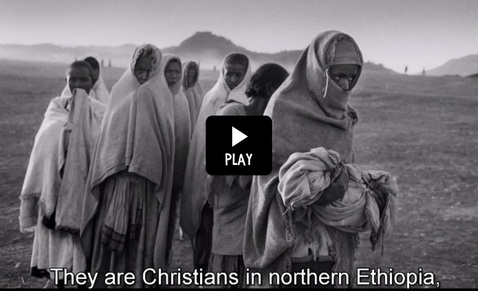Take a look at poverty
examples of the real world
examples of the real world
|
A Selgado documentary:
(22 minutes) Do you think that you are a Christian? Then take a look at some of your brothers and sisters |

life in Freetown,
Sierra Leone
(with Dutch subtitles
57 minutes)
Sierra Leone
(with Dutch subtitles
57 minutes)
Convincing figures of a hurting world
Children
Compare the infant mortality rate in some countries with the rate in the U.S.:
(deaths/1,000 live births)
- Somalia: 110.97
- Chad: 100.36
- Sudan: 86.98
- Burkina Faso: 86.02
- Laos: 79.61
- United States: 6.30
(source: CIA - The World Factbook - 200
Education
Literacy rates in some countries where are as low as 25%
- Only 40% of men and 28% of women ages 15-24 in Burkina Faso know how to read or write
- Sub-Saharan Africa accounts for 47% of the world's out-of-school children; 54% are girls
- There are an estimated 500,000 hearing impaired children in Bangladesh, but only 36 schools with a capacity for 1,750 students
- Fewer than 50 percent of all Kenyan children attend school
- Many families cannot afford mandatory school uniforms for their children without World Concern's help
sources: CIA, UNESCO and World Concern
Hunger
- More than one third of child deaths worldwide are attributed to undernutrition
- Chronic malnutrition has stunted the growth of out 178 million children worldwide, with the highest rates in Africa and Asia
- Stunted growth causes brain development to lag
- About 20% of deaths of children under-five could be avoided with proper nutrition
- Proper nutrition may help delay the progression of HIV/AIDS
- Close to half of Haiti's population is affected by food insecurity
Sources: World Health Organization, World Concern
Income
- Extreme poverty is defined as living on less than $1.25 per day
- 1.4 billion people (one in four) live in extreme poverty
- Extreme poverty is most common in Sub-Saharan Africa, SE Asia and Central America, areas where we work
- More than 5 million people live in Bangladeshi slums
- 45% of people in Bangladesh live in poverty
- 60% of people in Bolivia live in poverty
- Money lenders on the streets of Bangladesh may charge 50% to 100% interest annually on microloans
Sources: UNICEF, World Concern, CIA "The World Factbook"
Health
The pursuit of good health - a long journey
- AIDS remains the #1 killer in Sub-Saharan Africa
- 33 million people have AIDS worldwide
- 23 million people with AIDS live in Sub-Saharan Africa
- Intestinal parasites infect roughly 40% of the world's children
- Parasites consume essential nutrients and cause anemia, malnutrition, skin disorders and stunted growth
- More than half a million women die every year of complications during pregnancy or childbirth; most of these deaths can be avoided with proper medical care
Sources: UNAIDS, UNICEF, World Health Organization
Most people cannot get enough clean water
- Diarrhoeal disease alone is responsible for 1.8 million deaths annually(see article in Time below)
- In sub-Saharan Africa, 42% of the population lacks improved water
- In 2002, 1.1 billion people lacked access to improved water sources (about one out of six people)
- Of those 1.1 billion people, nearly two thirds live in Asia
- Droughts cause the most ill-health and death because they often trigger and exacerbate malnutrition and famine
- Between 28 and 35 million people in Bangladesh consume drinking-water with elevated levels of arsenic
Source: World Health Organization
The Causes of Poverty



